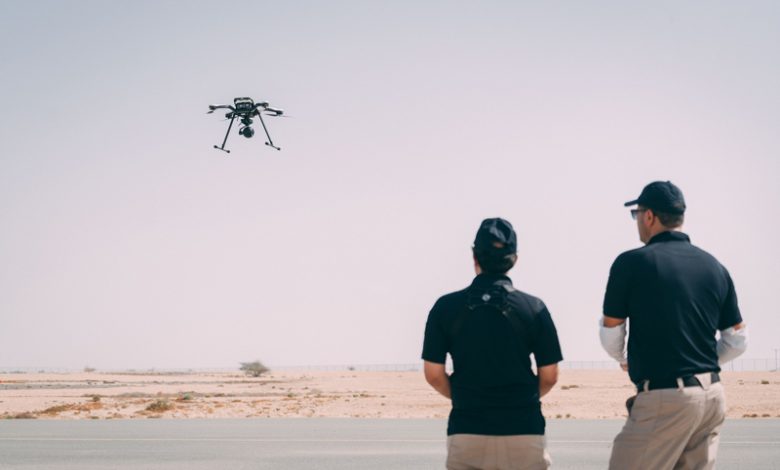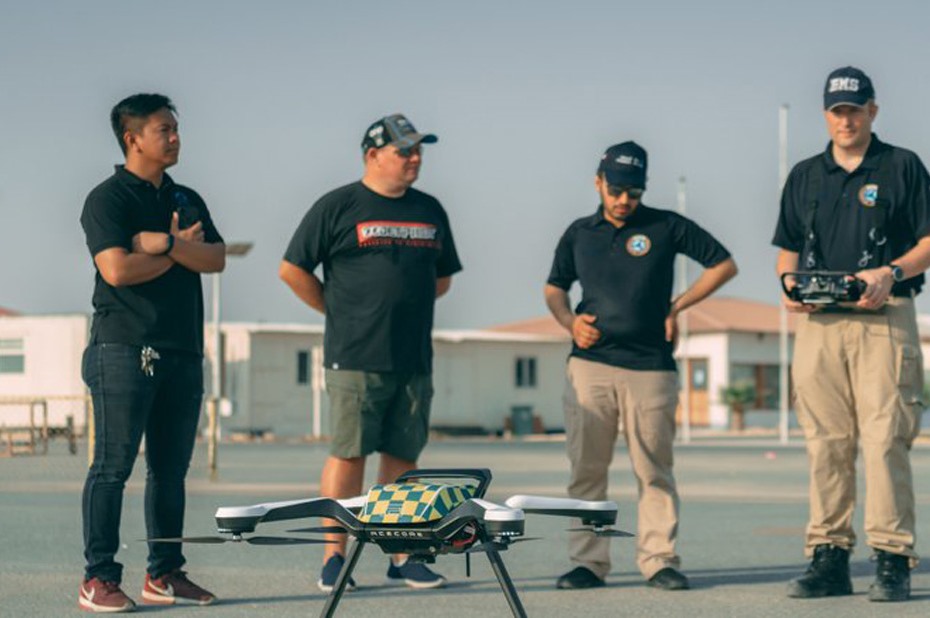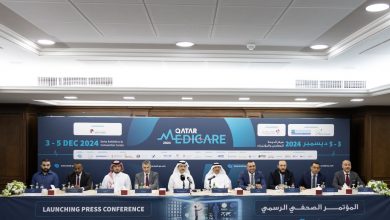
HMC introduces drones to boost emergency services
«حمد الطبية» تستخدم طائرات بدون طيار في خدمة الإسعاف
Doha: Hamad Medical Corporation’s (HMC) Ambulance Service has begun using drones to enhance its surveillance capability of incident scenes. The drones help the Ambulance Service teams undertake a thorough assessment of the surrounding areas, providing the information needed to ensure the very best medical response can be delivered.
The drones were used for the first time at the end of the September during the IAAF World Athletics Championships in Doha and are now being used on an as-needed basis.
“The introduction of the drones is another step forward for the Ambulance Service and further enhances our ability to provide high-quality emergency services to Qatar’s population,” explained Thomas Reimann, Executive Director of Healthcare Coordination and Support Services at HMC’s Ambulance Service.
“The drones provide a detailed overview of a complex scene to help us better understand a wide range of elements, including the number of causalities involved, what hazards are on site, the exact location of ambulance units, and access and egress routes,” added Reimann.
The drones are controlled by Ambulance Service staff close to the incident scene. However, the drones can fly long distances from the operator by pre-programming a determined flight path.
Rashid Andaila, Senior Manager of Communication Technologies at HMC’s Ambulance Service explained that the drones have already proved to be a valuable addition to the service.
“We are still in the early stages of using the drones, but it is already clear that our ability to fully assess incident scenes is being enhanced. The most common utilization of the drones so far has been tethering the drones one hundred meters directly above the scene, enabling a birds-eye view of the incident,” stated Andaila.
“The images can be viewed locally through a bespoke viewing case or streamed to the Mobile Command and Control vehicle, or any predefined HMC computer. The drones also improve our ability to assess incident scenes in difficult to reach areas, such as the Sealine area. Through rapid assessment of the scene via the drone, we can quickly and accurately determine which response units are best suited to the situation,’’ added Andaila.
أعلنت مؤسسة حمد الطبية أن خدمة الإسعاف التابعة لها بدأت تشغيل طائرات بدون طيار بهدف تعزيز قدراتها في مراقبة مواقع الحوادث والطوارئ الطبية وتمكين طواقم الإسعاف من تقييم هذه المواقع والمناطق المحيطة بها، وبالتالي الحصول على المعلومات اللازمة للاستجابة لحالات الطوارئ الطبية وفق أفضل المعايير الممكنة.
وكانت خدمة الإسعاف بحمد الطبية قد استخدمت الطائرات بدون طيار للمرة الأولى في أواخر شهر سبتمبر 2019 خلال فعاليات بطولة العالم لألعاب القوى، في حين تستخدم هذه الطائرات في الوقت الحالي حسبما تقتضيه ضرورة الطوارئ الطبية.
وقال السيد توماس رايمان المدير التنفيذي لتنسيق خدمات الرعاية الصحية والمساندة في خدمة الإسعاف بمؤسسة حمد الطبية، إن إضافة الطائرات بدون طيار في خدمة الإسعاف تعتبر خطوة إلى الأمام في مسيرة تطوير خدمة الإسعاف وتمكينها من تقديم خدمات طوارئ طبية على مستوى عال من الجودة للمجتمع القطري.
وأضاف أن هذه الطائرات تقوم بتوفير صور تفصيلية لمواقع الحوادث والطوارئ الطبية وتساعد في تقييم هذه المواقع والعوامل المرتبطة بها وبالمناطق المحيطة بها، بما في ذلك عدد الإصابات والأخطار المحتملة في هذه المواقع والأماكن المحددة التي تتواجد فيها سيارات الإسعاف والمخارج التي يمكن أن تسلكها هذه السيارات للوصول إلى المواقع المعنية.
ويتم التحكم بالطائرات بدون طيار من قبل طواقم الإسعاف التي تكون قريبة من مواقع الحوادث والطوارئ الطبية، إلا أنه يمكنها الطيران لمسافات بعيدة عن موقع التحكم، وذلك من خلال برمجتها المسبقة للتوجه إلى مواقع محددة سلفا.
من جانبه، قال السيد راشد أنديلة مدير أول تكنولوجيا الاتصالات في خدمة الإسعاف بمؤسسة حمد الطبية، إن تشغيل الطائرات بدون طيار في خدمة الإسعاف لا يزال في مراحله الأولية، إلا أنه عزز من القدرة على تقييم مواقع الحوادث والطوارئ الطبية، حيث يتم في الوقت الراهن تشغيلها في وضع ثابت على ارتفاع 100 متر مباشرة فوق موقع الحادث مما يتيح الحصول على صورة تفصيلية واضحة للموقع.
كما لفت إلى أنه يمكن الاطلاع على الصور المرسلة من الطائرات بدون طيار من خلال نظام استقبال مصمم خصيصا للمواقع، أو من خلال جهاز مثبت في إحدى سيارات القيادة والسيطرة المتنقّلة التابعة لخدمة الإسعاف، أو عبر أجهزة الكمبيوتر في مرافق مؤسسة حمد الطبية.
ومن شأن الطائرات بدون طيار المساعدة أيضا في تقييم المواقع البعيدة أو التي يصعب الوصول إليها مثل منطقة “سيلين”، حيث يمكن تحديد وحدات الاستجابة المناسبة التي سيتم إرسالها إلى الموقع المطلوب.




